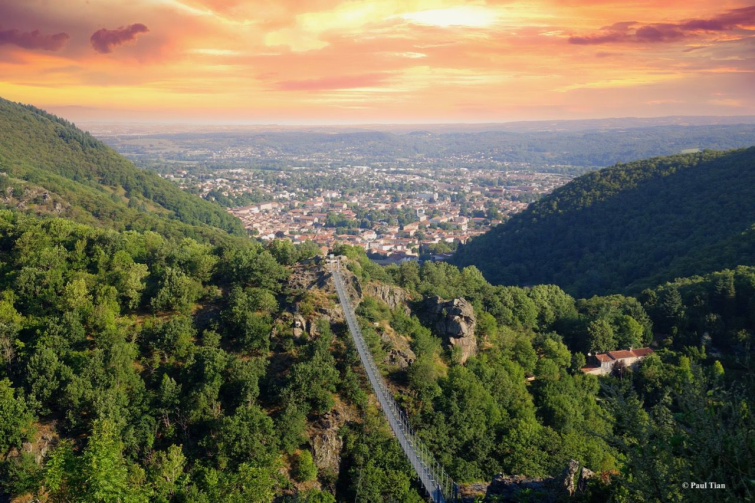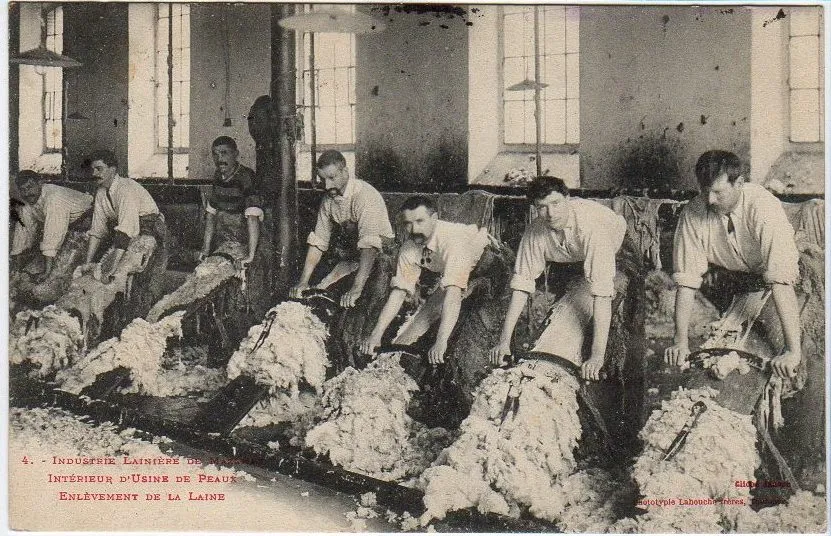History & Culture
Mazamet, Wool Pulling Capital of the World: A Unique Industrial Legacy
Nestled at the foot of the Montagne Noire, Mazamet in southern France became internationally known as the world capital of wool pulling (délainage). This unique craft, combined with a strong industrial tradition in leather and wool, shaped Mazamet’s identity and global reputation. Let’s explore the story behind this industrial epic and how it continues to inspire artisans and entrepreneurs worldwide.
Wool Pulling: A Craft Born in the Montagne Noire
Wool pulling is the process of separating wool from sheepskin, turning them into two valuable raw materials: wool and leather. This method developed at industrial scale in Mazamet during the late 19th century.
Why Mazamet? Its strategic location played a key role: the humid climate at the foot of the Montagne Noire was ideal for treating hides, and the abundance of rivers provided water power for mills and factories. Combined with a local culture of artisans, tanners, and traders, Mazamet became a hub for a fully integrated textile industry.
At its peak, the town processed over 100,000 tons of raw wool per year, imported from Australia, Argentina, South Africa, and beyond. With nearly 200 factories, Mazamet supplied Europe with top-quality wool and leather.

From Wool to Leather: A Parallel Industry Thrives
The separated hides were then passed on to local tanneries and leather workshops. This gave rise to Mazamet’s booming leather industry.
Even today, local brands like Berthille carry on this craftsmanship tradition, creating high-quality leather goods with a focus on design, heritage, and local sourcing. The leather from this region is renowned for its softness, durability, and premium feel—attributes sought after by luxury fashion and saddle-making industries.
The Montagne Noire: A Natural Ally of Industry
The Montagne Noire was more than a backdrop. It provided hydraulic power, wood for tanning, and natural insulation that benefited trade and industry in the 19th century.
Its relative isolation also fostered a strong local identity, rooted in skilled labor, perseverance, and a quiet dedication to quality. Generations of industrial families and artisans emerged from this rich cultural environment.

A Global Legacy
Mazamet’s influence extended far beyond France. Many local entrepreneurs emigrated to South America, South Africa, or New Zealand, creating wool and leather businesses and forming a global network.
Today, the descendants of these families and former workers can be found worldwide, proudly carrying the Mazamet name into new ventures and creative industries.
Mazamet Today: Tradition Meets Renewal
Though the height of its industrial era has passed, Mazamet is experiencing a revival:
- Leather artisans like Berthille preserve and modernize ancient skills.
- The Maison des Mémoires (Memory House) showcases the history of wool pulling.
- The Path of the Factories offers a walking tour of the town’s industrial past in a stunning natural setting.
Conclusion
Mazamet is more than a former industrial town — it is a symbol of skill, resilience, and legacy. From wool to leather, from the Montagne Noire to the world, its story continues in the hands of artisans and the minds of entrepreneurs.

